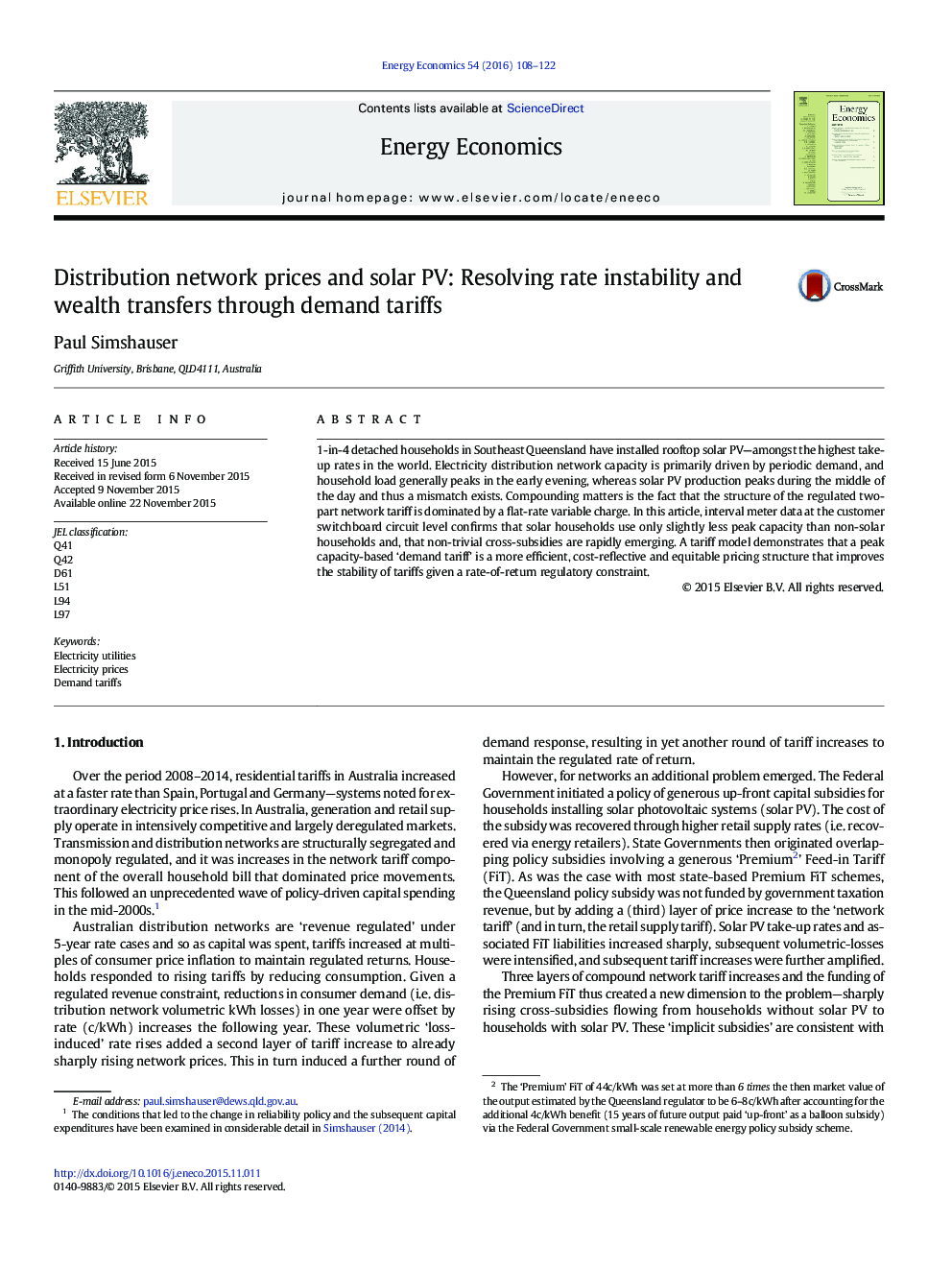| کد مقاله | کد نشریه | سال انتشار | مقاله انگلیسی | نسخه تمام متن |
|---|---|---|---|---|
| 5064063 | 1476710 | 2016 | 15 صفحه PDF | دانلود رایگان |

- Southeast Queensland has amongst the highest take-up rates of rooftop solar PV.
- Household load at the customer switchboard circuit level is analysed.
- The existing Two-Part Tariff results in large wealth transfers to solar households.
- A Three-Part Demand Tariff produces more efficient and equitable outcomes.
- Above all, Demand Tariffs exhibit more stability as solar take-up rates accelerate.
1-in-4 detached households in Southeast Queensland have installed rooftop solar PV-amongst the highest take-up rates in the world. Electricity distribution network capacity is primarily driven by periodic demand, and household load generally peaks in the early evening, whereas solar PV production peaks during the middle of the day and thus a mismatch exists. Compounding matters is the fact that the structure of the regulated two-part network tariff is dominated by a flat-rate variable charge. In this article, interval meter data at the customer switchboard circuit level confirms that solar households use only slightly less peak capacity than non-solar households and, that non-trivial cross-subsidies are rapidly emerging. A tariff model demonstrates that a peak capacity-based 'demand tariff' is a more efficient, cost-reflective and equitable pricing structure that improves the stability of tariffs given a rate-of-return regulatory constraint.
Journal: Energy Economics - Volume 54, February 2016, Pages 108-122